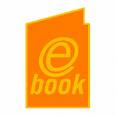
What is an electronic book E-books are text files that are similar in their order books. Spread
e-books after the significant progress achieved in the area of printing And storage of information
electronically by computers. After the advent of the Internet The purchase of
electronic books
is remarkable commerce sites on the World Wide Web. For sizes ranging from a few hundred
kilobytes to more than one hundred megabytes in some cases, Here comes a working media files
(audio, image, and video) to increase the volumes of books directly proportional to the greater
or where. Some formats frequently used in the manufacture of electronic books for example,
PDF and CHM files are the most used formats Publishing companies in the manufacture of
electronic books.
E-Books are part of the new frontier of cyberspace. They are an entirely new medium for
sharing marketing information, ideas, techniques, and expert knowledge. Each day the number
of people accessing the Internet grows, causing the exposure of your E-Book to increase
incrementally. It’s obvious why electronic self-publishing has become so popular so quickly.
The publishing industry, I hope, does not intend to forever banish the printed word to the
dustbin of history. Books in print have their own special qualities and merits, and the world
would be diminished by their disappearance.
Here is what makes E-Books so important and unique:
E-Books have certain abilities and qualities that other mediums do not possess. For example, E-
Books are fairly easy to produce, and their production cost is inexpensive. Just think about it:
you don’t need a publisher, an agent, a printing press, offset film, ink, paper, or even a
distributor. You just need a great concept, the ability to write it or to hire a writer, and the right
software.
E-Books are easily and rapidly distributed online. They are also easily updated; they do not
require a second print run. All you need is to go into your original creation and modify the text
or graphics. Because of this flexibility, E-Books can change and grow as fast as you can type.
E-Books are also immediately obtainable. You don’t have to go to a bookstore or search through
endless titles at an online bookstore. All you have to do is download it from a website, and
presto! It’s on your computer, ready to be read.
E-Books are interactive. This is one of the most unique and specific qualities that E-Books offer.
You can add surveys that need to be filled out, order forms for customers to purchase your
products or goods, sound and video that draw your reader into the virtual world of your E-Book,
even direct links to relevant sites that will expand your E-Book outward. The potential is
virtually limitless.
E-Books have a particular kind of permanence that other mediums do not possess. Television
shows and radio shows air once, and then may rerun a few times. E-Books remain on your
computer for as long as your choose, and they can be read and reread whenever you choose to.
They can even be printed out and stored on the shelves of your traditional home library.
E-Books have no barriers in terms of publishing. You don’t need to go through the endless
process of submitting your manuscript over and over again, and then once you land an agent,
having the agent submit your manuscript over and over again. Nor do you have to shell out
thousands of dollars for printing a self-published book. All E-Books require is a writer and
appropriate software.
Figure out your market, write your book, post it on your website, and with the right business
savvy, your audience will come to you.
Finally, you have creative control over your E-Book. You don’t have to compromise with an
editor or the publishing trends of the time. You don’t have to haggle with a designer or wait for
copyedited galleys to arrive by snail mail. You are in complete control of the design and the text.

